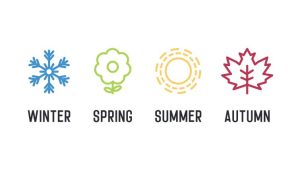How to Create a Compelling Social Media Resume
 Publié le 21 February 2023
Publié le 21 February 2023
Learning how to create a compelling social media resume will help your application stand out to recruiters and get you the job you want.
A well-crafted social media resume allows you to show off your knowledge, background, and expertise in a unique manner. It also gives you an opportunity to impress recruiters before they get to meet you in person. As a result, you definitely want to make it stand out.
Recruiters seeking to fill up social media roles (for example, social media managers, content developers, social media analysts. etc,.) look out for resumes that indicate profound aptitude for the job. No doubt, you can create a social media resume that does just that by including the right details that will prove you’re the right person for the job.
Let’s dive in!
1. Contact Information
The first step in creating a compelling social media resume is to include your contact information. This way, you make it as easy as possible for recruiters to reach out to you. This may seem obvious, but it’s important to ensure that the basic requirements of your resume are being met.
The contact information should include basic details like your name, email address, and phone number. Pretty much the same thing you’ll have on your physical or digital business cards. Ideally, this should be prominently displayed at the top of your resume. It should also be easy to read.
Here’s a good example:
Importantly, ensure that the contact details you share are active and accurate. You don’t want to leave an old phone number that’s unreachable on your resume. Your email address should also be professional. Avoid using emails like spicegirl77@yahoo.com or Aquaman101@gmail.com. The goal is to be as professional as possible with every detail, something as close as possible to your name would be ideal.
2. Summary
Writing a good summary on your social media resume is an effective way to ensure that the recruiters keep reading. The summary is like a snapshot of your skills and experience. It’s also where you briefly state the value you’ll bring to the organization if they choose to work with you.
Based on a Ladder study, recruiters use about 7.4 seconds when they examine a resume. It’s important to keep your resume summary straightforward and concise. At best, keep it within 3 – 4 sentences.
Focus on your most relevant and impressive qualifications. For instance, you can highlight your experience with social media platforms, your ability to drive engagement, and your understanding of digital marketing. See the example below:
Make sure to use keywords relevant to the social media industry and the job you’re applying for. According to Cultivated Culture, including relevant keywords in your resume will increase your chances of landing a job interview. There’s a good chance that you’ll know which keywords to include based on what the recruiters say they want in the job post. Given that many companies now use AI-assisted programs to sort applications, if you fail to include keywords from the job description there is a good chance that your resume won’t make it past the initial screening.
It’s crucial to state here that you need to be honest when writing about your expertise even though you’re looking to impress the potential employer. Also, don’t be afraid to get a little creative with your summary. Show your personality and make yourself stand out from the hundreds of resumes recruiters receive. After all, social media is all about creating a connection, and you want your summary to reflect that.
However, you must avoid unnecessary buzzwords and fluffy sentences. If you’re having a hard time writing a good summary, you can work with a good summary generator and tweak the suggestions to fit your preferences.
3. Education
You definitely want to create a social media resume that reveals your educational qualifications. So, go ahead to include your degrees, the universities or colleges you attended, the majors, and any relevant certifications. Additionally, the recruiters may indicate that they want ideal candidates to have a particular degree and this is a good place to indicate that you have it.
There are various ways to outline your educational background. Be sure to highlight educational descriptions based on the job requirements. For example, this job post shows that the recruiter wants candidates with a high-school diploma, so it’ll be a smart move to make this prominent on your resume:
That said, here are some basic details to have on the “education” section of your social media resume:
- Name and location of your school
- The degree acquired (if applicable)
- Year of graduation
- Field of study
Like the example below, it’s not a bad idea to include your GPA if it’s higher than 3.4. Remember that you want to put your best foot forward.
It’s also important to maintain consistency in how you write your educational details. For instance, you may choose to write in this format:
- Degree (eg: HSD, HND, BSc, MA, etc.,)
- School
- Year of graduation
Or,
- School | Degree
- Year of graduation
The overall layout of your resume also influences how your educational qualifications are outlined. Concerning the degrees, you can either use the abbreviations (eg: HSD) or write them out in full (eg: High School Diploma). Either way, ensure that you use the same format across your resume.
4. Skills
Your skills section is where you highlight your practical ability to get things done. Recruiters often look for top soft skills like problem-solving skills, the ability to work in a team, written and verbal communication skills, and technical skills.
Apart from these top skills, you also want to highlight skills that are relevant to the social media industry. This includes skills like content creation, analytics, graphic design, the use of social media platforms, and so on.
Typically, your future employer will mention specific skills in job postings that they want the applicant to possess. While you may be tempted to mention a ton of skills, it’s best to make your resume stand out with high-demand skills.
Apart from highlighting the skills in a particular section, you should also indicate how you used these skills— this can be done when you outline your job functions in previous roles. Let’s explore an example:
In this sample resume, the applicant lists SEO practices among their skills. While highlighting their work history, they show this skill at work by stating “Utilized SEO best practices to increase the social media program’s visibility and organic growth” — see the red box.
Also, remember that the summary section is another key position for mentioning your skills. Additionally, the social media landscape is constantly evolving, so be sure to include the skills that are more recent and in demand at the time of your application.
5. Certifications
When you create a social media resume, be sure to add your certifications. These show your suitability for the job. They also show the recruiter that you invest in your professional development.
Also, recruiters may require that candidates know how to use specific tools like SEMRush or Google Analytics. They may also demand specific skills like analytics, copywriting, and so on. In this case, adding relevant certifications in such areas will show your expertise. It’s also a good catch if you have a limited work history.
Make sure to list the certification acquired alongside the organizations that issued them, and the date they were earned. This will help the recruiter verify the certification as well as the recency of acquisition. Here’s an example:
You can list certifications in the education section of your resume or create a “certifications” section. As with other details, include only relevant certifications. If you have any certifications that are specific to social media platforms, like Facebook Blueprint, Twitter Flight School, etc., make sure to list them. This will demonstrate your knowledge of the platform, and the ability to use it effectively.
6. Awards and Other Accomplishments
Of course, you wouldn’t create a social media resume without showing off your awards and other accomplishments. Highlighting the awards you’ve received helps you show your drive for excellence. You can state relevant awards you were given in school, at work, at notable industry events, and so on.
When listing your awards, you should include the name of the award, the year it was received, and the organization that gave you the award. Just like this:
The other accomplishments you include should be specific and result-oriented. So, it’s best if they’re backed by statistics or figures. For example, if you helped an organization gain more Instagram followers through successful social media campaigns, you can state that in this manner:
- Increased Instagram followers by X% in Y months through optimized social media campaigns.
This way, recruiters can see just how much you contributed to previous places you’ve worked. See this example:
Finally, endeavour to list awards and your other accomplishments that are relevant to the social media industry. If you have the space on your resume, don’t be afraid to include non-professional accomplishments that still demonstrate skills that are transferable to the social media field.
7. Social Media Profiles
Including links to your professional social media profiles within your resume will allow potential employers to see the types of content you create and how you engage with your audience. It’s also helpful with recruiters that may want to do a background check.
A strategic place to put this will be close to your contact information. For a digital resume, you can embed links within the text or icons, like this example:
If it’s a hard copy resume, simply write out your profile name or social media URL. To make the URLs more concise, you can use URL shorteners like Bit.ly or Tiny URL. You can also customize your URL with these online tools.
Adding social media profiles to your resume only works in your favour when you have a strong social media portfolio. So, if you’re thinking of which social media profile to add, LinkedIn is a good start. Instagram and Twitter are also good recommendations. This means that you must take your personal branding and online presence seriously. To boost your personal branding, start by designing a profile picture to ensure your profile looks professional and polished. Additionally, make sure to share industry-relevant content and engage with your followers frequently to build a strong social media portfoliot.
Apart from the type of social media posts, the number of followers you have and the level of engagement on your social media accounts also contribute to impressing potential employers.
In Closing
Knowing how to create a compelling social media resume is crucial to your being unique in a competitive job search. Recruiters look for the best and it’s your responsibility to show them that you’re worth a shot. Hence, the need for a thoroughly furnished social media resume.
While it may get confusing to decide which information to add to your resume, it’s advisable to highlight what’s relevant to your prospective employers. In this blog post, we showed you just how to do that.
Begin with your accurate contact information and engaging summary. Then, showcase relevant educational qualifications and a comprehensive list of skills. Wrap it up with relevant certifications, awards and accomplishments, and social media profiles.
Remember to stay up-to-date with the latest trends and platforms in the social media industry. This will help you present yourself as a well-equipped, professional candidate. With the right approach, you can increase your chances of landing your dream job in the social media industry. Good luck!







